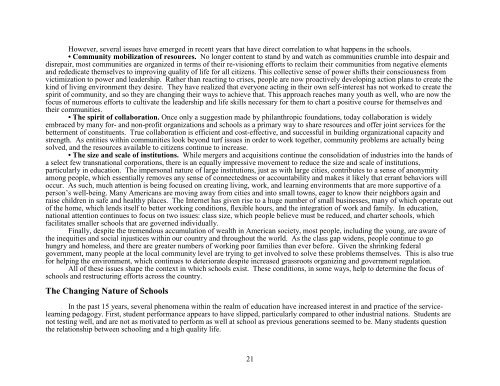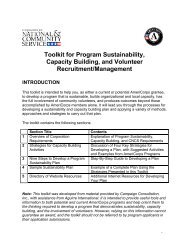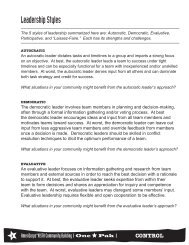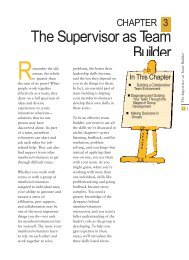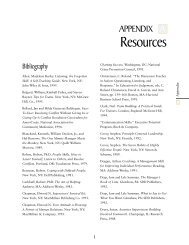MAKE IT LAST FOREVER: THE ... - National Service Resource Center
MAKE IT LAST FOREVER: THE ... - National Service Resource Center
MAKE IT LAST FOREVER: THE ... - National Service Resource Center
You also want an ePaper? Increase the reach of your titles
YUMPU automatically turns print PDFs into web optimized ePapers that Google loves.
However, several issues have emerged in recent years that have direct correlation to what happens in the schools.<br />
• Community mobilization of resources. No longer content to stand by and watch as communities crumble into despair and<br />
disrepair, most communities are organized in terms of their re-visioning efforts to reclaim their communities from negative elements<br />
and rededicate themselves to improving quality of life for all citizens. This collective sense of power shifts their consciousness from<br />
victimization to power and leadership. Rather than reacting to crises, people are now proactively developing action plans to create the<br />
kind of living environment they desire. They have realized that everyone acting in their own self-interest has not worked to create the<br />
spirit of community, and so they are changing their ways to achieve that. This approach reaches many youth as well, who are now the<br />
focus of numerous efforts to cultivate the leadership and life skills necessary for them to chart a positive course for themselves and<br />
their communities.<br />
• The spirit of collaboration. Once only a suggestion made by philanthropic foundations, today collaboration is widely<br />
embraced by many for- and non-profit organizations and schools as a primary way to share resources and offer joint services for the<br />
betterment of constituents. True collaboration is efficient and cost-effective, and successful in building organizational capacity and<br />
strength. As entities within communities look beyond turf issues in order to work together, community problems are actually being<br />
solved, and the resources available to citizens continue to increase.<br />
• The size and scale of institutions. While mergers and acquisitions continue the consolidation of industries into the hands of<br />
a select few transnational corporations, there is an equally impressive movement to reduce the size and scale of institutions,<br />
particularly in education. The impersonal nature of large institutions, just as with large cities, contributes to a sense of anonymity<br />
among people, which essentially removes any sense of connectedness or accountability and makes it likely that errant behaviors will<br />
occur. As such, much attention is being focused on creating living, work, and learning environments that are more supportive of a<br />
person’s well-being. Many Americans are moving away from cities and into small towns, eager to know their neighbors again and<br />
raise children in safe and healthy places. The Internet has given rise to a huge number of small businesses, many of which operate out<br />
of the home, which lends itself to better working conditions, flexible hours, and the integration of work and family. In education,<br />
national attention continues to focus on two issues: class size, which people believe must be reduced, and charter schools, which<br />
facilitates smaller schools that are governed individually.<br />
Finally, despite the tremendous accumulation of wealth in American society, most people, including the young, are aware of<br />
the inequities and social injustices within our country and throughout the world. As the class gap widens, people continue to go<br />
hungry and homeless, and there are greater numbers of working poor families than ever before. Given the shrinking federal<br />
government, many people at the local community level are trying to get involved to solve these problems themselves. This is also true<br />
for helping the environment, which continues to deteriorate despite increased grassroots organizing and government regulation.<br />
All of these issues shape the context in which schools exist. These conditions, in some ways, help to determine the focus of<br />
schools and restructuring efforts across the country.<br />
The Changing Nature of Schools<br />
In the past 15 years, several phenomena within the realm of education have increased interest in and practice of the servicelearning<br />
pedagogy. First, student performance appears to have slipped, particularly compared to other industrial nations. Students are<br />
not testing well, and are not as motivated to perform as well at school as previous generations seemed to be. Many students question<br />
the relationship between schooling and a high quality life.<br />
21


